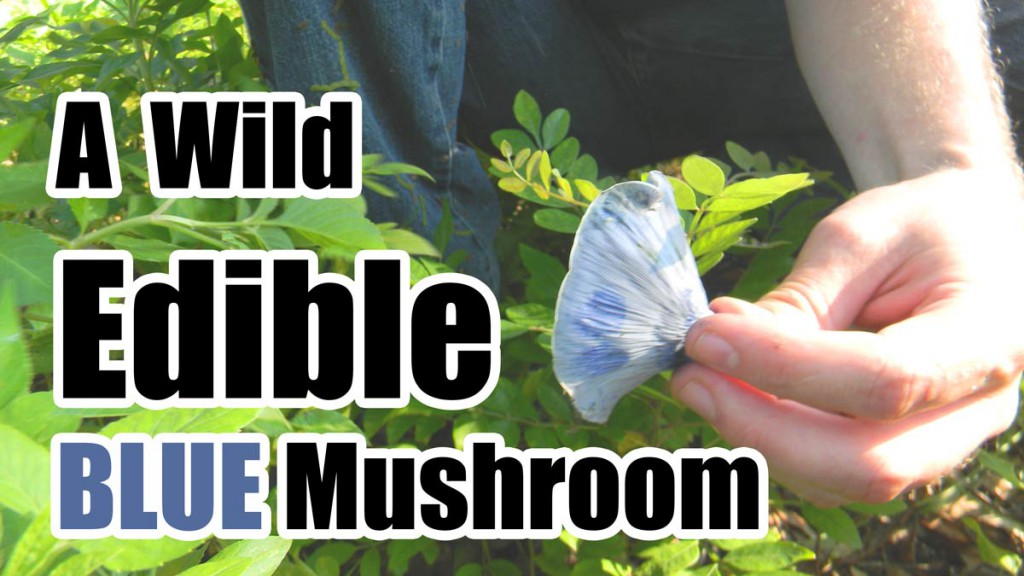 The first time I found a Lactarius indigo (known in normal boring language as the Indigo milk cap) I said to myself, “is this incredible blue mushroom edible? Could something this beautiful and bright actually be non-poisonous???”
The first time I found a Lactarius indigo (known in normal boring language as the Indigo milk cap) I said to myself, “is this incredible blue mushroom edible? Could something this beautiful and bright actually be non-poisonous???”
I’m pretty sure I’d seen the Indigo milk cap before in a guide book and I figured, well, whether it’s edible or not… I sure feel cool about finding something so beautiful.
Fortunately, when I double-checked it at home, I discovered it was indeed edible.
Since then, I’ve found Lactarius indigo mushrooms two more times, always in the same semi-wooded field where I found the first one a year ago.
This most recent time I had my camera with me – check it out:
Lactarius indigo isn’t a bad-tasting mushroom. The flavor is similar to a portobello but the texture is grainier. It tends to be more crumbly than rubbery. I like it.
The coolest thing is just that it’s beautiful.
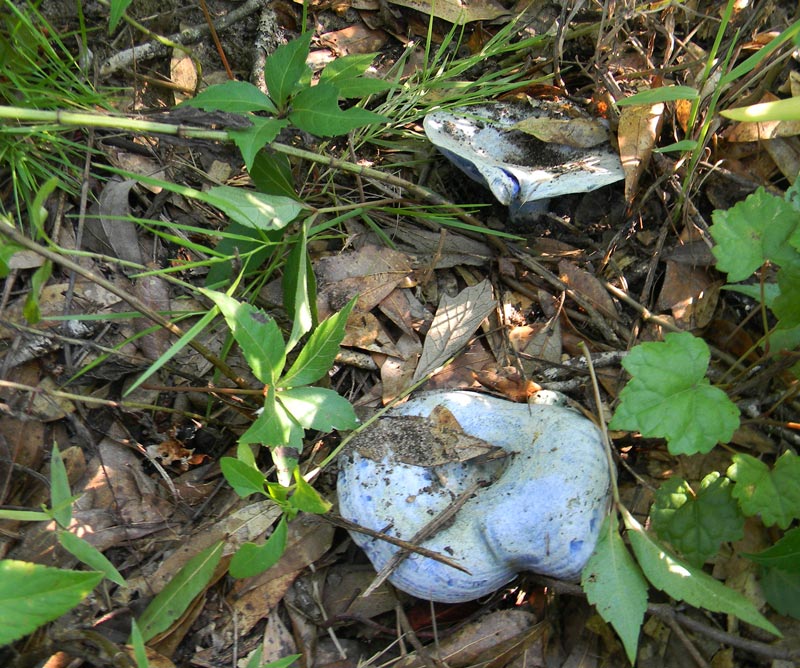
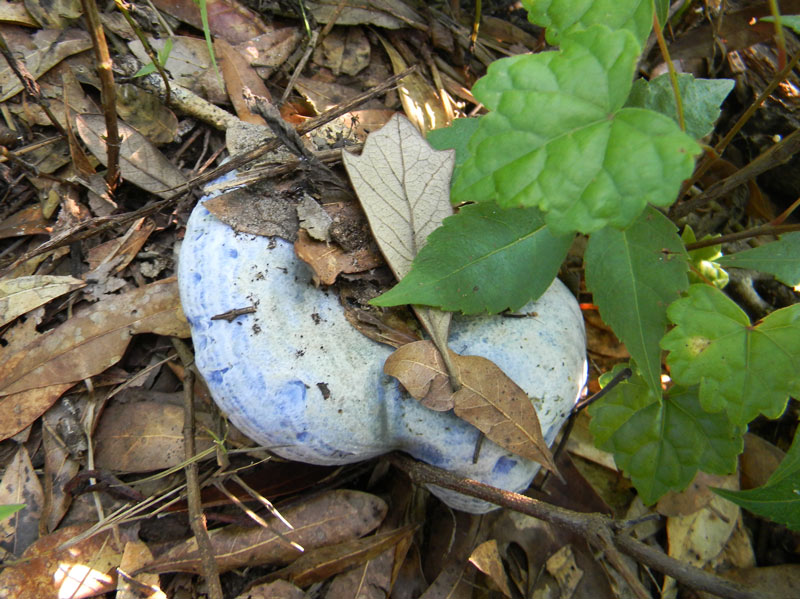
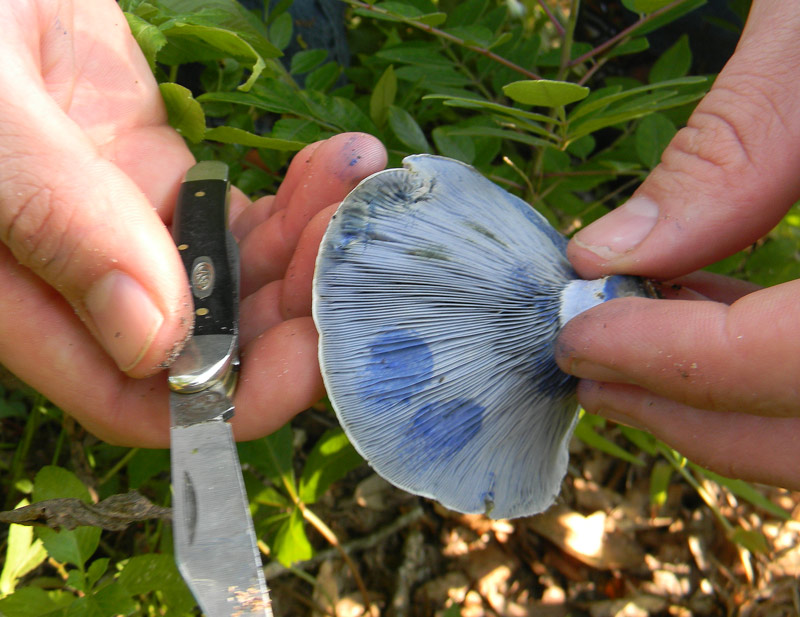 Carrying a knife when you go mushroom hunting is always a good idea.
Carrying a knife when you go mushroom hunting is always a good idea.
I also carry a basket for any edible mushrooms I find, along with a walking stick I use to push aside tall grass and weeds.
The knife is used to trim the “roots” off the base of the mushroom before it goes in the basket. That keeps dirt from falling into the gills. Once a mushroom has dirt in its gills, it’s really hard to get it out again. Bringing home some great wild edible mushrooms that you’re excited about, only to find them gritty upon cooking… well, let’s just say it dampens the spirit a bit.
Identifying Lactarius Indigo
Lactarius indigo is a blue or blue-gray mushroom that bleeds blue when damaged.
It grows in connection with the roots of a wide range of tree species, meaning that it’s very unlikely you’ll ever find one growing alone in a field. It’s common name is the “indigo milk cap” and it’s quite edible (though I must put a disclaimer here: Don’t eat any wild mushrooms without first checking with a local expert) with a good flavor.
For more on identifying Lactarius indigo and other wild edible mushrooms, pick up at least one or two of the books on my list of great books for mushroom foragers.

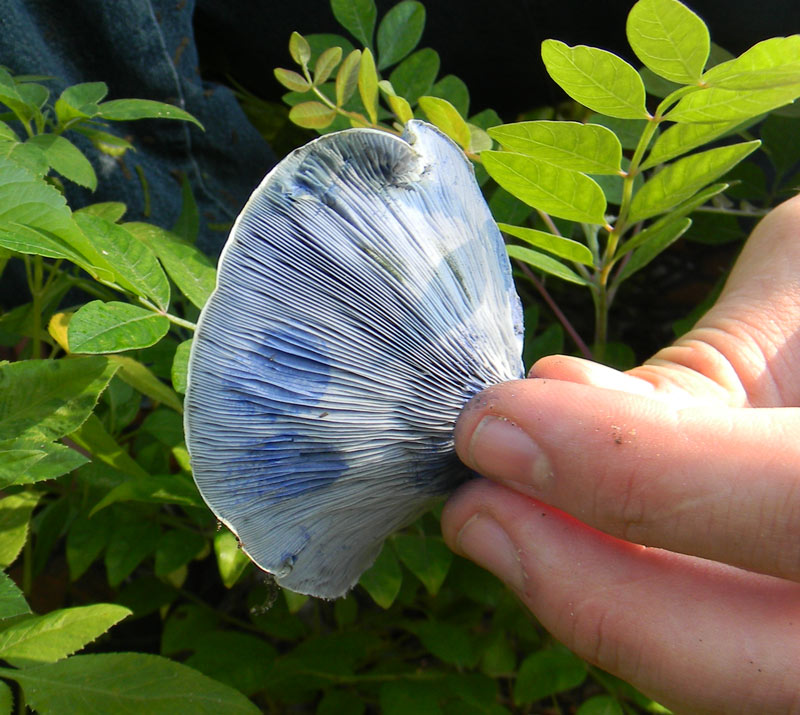

20 comments
Does it taste good enough that you would inoculate logs with it?
Actually, it wouldn’t grow on logs. They grow via a relationship with the roots of living trees, like chanterelles and boletes; unlike shiitakes, oysters, etc. which grow on dead wood.
I don’t do much with mushrooms other than some inoculated logs for vit D post SHTF. Shiitakes when sun dried upside down give the most vit D. Oysters seem to grow better for me though.
““A fresh shiitake boasts about 100 IU of vitamin D per gram, but if you dry it in the sun, it creates 10,000 IU. If you dry it upside down in the sun and let the gills absorb the sun, a gram will provide 20,000 IU. The mushrooms are so full of D, in fact, it’s important not to eat too many dried shiitakes, as vitamin D overdose can occur with chronic consumption of 40,000 IU of vitamin D per day.”
http://survivalblog.com/letter-re-vitamins-in-a-grid-down-situation/ Note the initials on the bottom.
That’s pretty awesome. I’ve helped a friend inoculate shiitake logs before, but haven’t grown them at my place yet. S.C.?
I think if there is a long term nigapocalypse vit D will be one of the things people will find hardest to replace. Many people today don’t even get enough with fortified milk/food. This is Big G Steve on VoxD.
Vitamin D in any place north of the Deep South… yes, you’re right. Very important and knowing shiitakes have it is good info.
I think all mushrooms have some vit D but Shiitakes stand out as a way to grown enough vit d for many people. Lack of vit d is linked to many problems, the Mayo clinic lists this”Vitamin D also appears to play a role in insulin resistance, high blood pressure and immune function — and how this relates to heart disease and cancer — but this is still being investigated” other sites say a lot more.
A study published in the March, 2010 issue of the Journal of Clinical Endocrinology and Metabolism found that 59 percent of the population is vitamin D deficient. In addition, nearly 25 percent of the study subjects were found to have extremely low levels of vitamin D.
I found a pretty blue mushroom in by my rose of Sharon. I live in pinnacle nc.
I found one in Cotaco, AL two years ago. I’d like to go back to where I found it this spring and see if I can find another one. It is beautiful.
I am lucky enough to have had a patch of blue mushrooms grow in my yard last year. Going to fence the area off when they resprout next year.
Great idea. They should return regularly after rains when the temperature is correct. Nice find!
I have so far this week found two of these blue beauties in my front yard on two separate occasions. I live in southeast Louisiana.
Do u got a recipe for them
I found one a month ago in conditions like those you describe. This was on the Ontario side of the Ottawa River about 230 km north of Ottawa. There has been a ridiculous amount of rain here since mid August and through September. The ground was a clearing but with a lot of white pine and a few immature oak, maple, and poplar. It was a double. I found another in the same location two years ago at the same time of year. Stunningly beautiful. I tried to air dry it but the humidity is so high that it rotted. That was disappointing because I enjoy seeing the shapes of mushrooms as they dry and was interested to see what would happen with the colouration.
Great find. They are pretty crumbly and fall apart when cooked, so my guess is that you’d have a hard time drying one even in ideal humidity.
I need help, is there any way to grow these indoors? Preferably on coco coir??
I highly doubt it. They grow around the roots of certain trees and are unlikely to be cultivatable.
I just found 2 large ones under my pecan tree this week. I took their pictures because their colors were exceptional.
I would love to see photos – would you email them to me? David@floridafoodforests.com. Great find!
[…] 1. Five plants that look like Marijuana 2. Five Easy To ID Florida Edible Wild Mushrooms 3. How To Identify an Edible Bolete Mushroom 4. How to make cane syrup at home… without a sugar cane press 5. The Edible Blue Mushroom: Lactarius Indigo […]
Comments are closed.